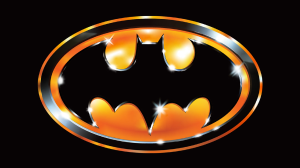Walt Simonson’s work on The Mighty Thor still marks the most legendary heights ever reached by the series and it all began with the introduction of a horse-faced, hammer-wielding alien beloved by Marvel diehards, but seemingly too strange for wider audiences: Beta Ray Bill. Bill’s first appearance captured the Marvel Comics tradition of going big with a bold design including a skeletal face and powerful frame combined with a tragic backstory; Bill was found worthy of wielding Mjolnir after having been horrifically transformed to protect his alien race as they searched space for a new home. It’s a potent and strange tale, one that has continued to attract readers for almost 40 years. It also makes the pairing of Beta Ray Bill with a modern comics writer and artist renowned for their impactful layouts, rich design work, and explosive narratives an obvious choice. Beyond some awkward place setting in Beta Ray Bill #1, Daniel Warren Johnson’s Marvel Comics miniseries debut speaks to the power and potential in both of its leading men.
Videos by ComicBook.com
Beta Ray Bill #1 has some modern history to dispense with before it begins. The issue opens with Fin Fang Foom attacking Asgard under the control of Knull, marking this as a “King in Black” tie-in. Connections to that mercifully concluding event are kept to a minimum and the encounter is instead used to showcase Bill’s role and key relationships. These are reshaped by the loss of his own enchanted hammer, Stormbreaker, which is explained in a succinct bit of expository dialogue later in the issue. Whenever possible, Warren maintains the focus on his hero and avoids delving into insignificant ephemera like “Prey.” It’s a smart tactic and one that allows this debut to standalone, unlike other recent Marvel launches. When readers arrive at the final page, it’s clear what conflicts Bill is facing and why readers should care about this bizarre alien protector.

Johnson, in a fashion reminiscent of Wonder Woman: Dead Earth, emphasizes the tragic aspects of Bill’s character. He is defined as a fish out of water, a powerful protector who after so many events still feels separated from his adopted place, friends, and lovers. This distance is emphasized by his terrifying appearance and the long shadow of King Thor, compelling him to seek solitude. This approach makes Bill much more relatable and provides new readers a nearly perfect distillation of what makes the character work. Johnson also excels at depicting inhuman features in a deeply moving manner; Bill’s sorrow and regret hang from his face in thickly chiseled lines that make the emotions on display unmistakable.
The sprawling action sequence at the heart of Beta Ray Bill #1 is bound to attract the most attention from readers, however. Those already familiar with Johnson’s work on Extremity and Murder Falcon will recognize him as a kinetic artist whose comics pages provide unmatched momentum and impact. The battle between Foom and Bill here is one of the most impressive battles drawn by Johnson in his career so far. Forms become liquid in motion as a dragon is launched by their tail or heroes are snatched up in monstrous jaws—they streak across panels and capture the eye with ease. Two spreads provide climaxes for the issue’s contrasting moods of conflict and solitude, yet in Johnson’s hands most action-oriented panels are provided with the impact of a splash page. The complete battle on Asgard is a feat to behold.
Johnson’s collaboration with colorist Mike Spicer continues to pay dividends. It’s easy to appreciate the vibrant mix of colors as dragons and gods do battle upon a rainbow bridge; even Johnson’s dynamic sound effects are made to light up each panel. It’s in the smaller sequences that Spicer’s nuance can be fully appreciated, though. During an intimate sequence between Beta Ray Bill and Sif late in the issue, readers can witness the effects of candlelight and distinguish the encroaching shadows that play up the intense array of emotions displayed across only a few pages. Bill’s alienation would not be so easily identified or understood without Spicer’s colors enhancing each dramatic beat.
After Beta Ray Bill sets out on a new quest, the issue ends with an interview between Johnson and Simonson. It offers a pitch perfect outro for this propulsive debut—a conversation between one of Marvel’s most impactful, historical creators and one of the most talented new voices of comics’ current generation. Both cartoonists have a knack for developing potent new ideas, tapping into personal stories amidst an epic scale, and crafting some of the most impactful artwork in all of superhero comics. Beta Ray Bill #1 makes a clear statement that almost 40 years after the characters debut in The Mighty Thor #337, there are still many incredible tales left to tell.
Published by Marvel Comics
On March 31, 2021
Written by Daniel Warren Johnson
Art by Daniel Warren Johnson
Colors by Mike Spicer
Letters by Joe Sabino with Daniel Warren Johnson
Cover by Daniel Warren Johnson and Mike Spicer








